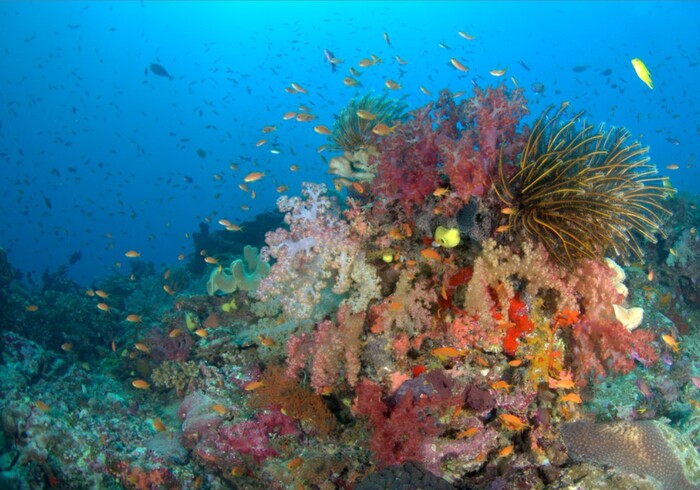Enlarge image
Photo:
Ilka Sokolowski & Janine Czichy / Gerstenberg
There is no guarantee of sunshine on the North and Baltic Sea coasts.
Those who go there should also appreciate stormy weather and rainy days.
This is not a problem for most children, there are rubber boots.
The regions reward with many species of birds, seals, amber, ebb and flow as well as unusual landscapes such as dunes and mudflats.
And wind.
To experience the expanse and liveliness by the sea is wonderful. And of course you can just enjoy the good air, sand and water. But before you know it, questions arise, because coastal life is in many ways very different from what we know it from inland. That's why I've been collecting non-fiction books on this topic over the past few months. Because it's nice to know what the lugworms are doing, whether the yellow stone is amber or not and why the water sometimes disappears.
The following books inspired me because they explain the beach and people and are beautifully illustrated.
They are about storms, waves, lighthouses, old stones, magnificent animals and a lost parasol.
Yes, a picture book has cheated under it, and if you are looking for a nice holiday story for the elderly that is set by the sea, I recommend "Toni wants to go to the sea" by Philip Waechter.
How did my sister say
"Philip has it all."
A day at the beach
In this picture book, you can feel the lazy heat that lays over a busy, noisy beach.
It is a mixture of narration and instruction about what children can do on the beach - and what they should rather not do.
Unfortunately, it doesn't read as airy and light as you would expect from the pictures.
This may be due to the wooden translation, but also to confusing changes in perspective between first-person and dufour or ironic comments about the behavior of adults on the beach.
It doesn't matter - because who hasn't gotten creative while reading aloud or has simply left out strange passages?
What's going on here?
A girl in red swimming trunks (plus point for that), around five years old, discovers life on the beach.
When looking for mussels, she meets the bellies and bottoms of the grown-ups at eye level, plays with other children and suddenly doesn't know where the family parasol is.
What now?!
Best time to read:
After a nap, in the shade.
Recommended age:
From 3 years.
Beach treasures.
The book for young collectors
Last summer I discovered this booklet in a friend's holiday home and bought it straight away.
Anyone who - like me - has just collected random stones on the beach up to now will be amazed at the stories all these found objects have to tell.
The photo book fits in every children's backpack, so that you can immediately see what you have found.
Perhaps this will make family walks a little more relaxed for everyone involved.
What's going on here?
Is that a fossil that is millions of years old or a stone that came here from Sweden during the Ice Age?
Mussels, glass, rolling pin, fish scraps - everything is explained with the help of large photos.
How old is it?
Where did it come from?
There are also tips in the appendix about collecting and safe behavior on the coastline, especially on the steep coast of the Baltic Sea.
Of course, it also explains exactly how to recognize amber.
Always a lot of fun.
Best time to read:
When walking on the beach.
Recommended age:
From 10 years.
Lighthouses
Sea voyages were probably seldom fun in the past, but the lighthouses made them safer.
Today they stand neatly along the coasts of this world and still save lives - but perhaps not as many as a hundred years ago due to modern navigation technology.
The Russian Roman Beljajew dedicates a wonderful picture book to these buildings.
Its striking style stands out from realistic non-fiction books, but it still remains understandable for children.
Thanks to the large font, it is also suitable for beginners.
What's going on here?
A lighthouse is not just a lighthouse.
You understood that after reading this picture book.
It basically explains everything that your children have not been able to answer on the subject before.
Everything is explained, from the special lens construction to the life of the lighthouse keeper to the question of what seafaring did without lighthouses and why there are different construction methods.
Where is the next lighthouse?
I have to go up there!
Best time to read: in the
evening, with a flashlight.
Recommended age:
8 years and over.
Julius does research on the sea
A friendly father-son project with water experiments and crafting tips for rainy days.
I imagine that this book would be perfect for taking a break from the beach, when you puff yourself into a corner of the sofa or on the holiday mattress.
Then you leaf through it and find explanations for what you have observed and get ideas for the next few days.
What's going on here?
A knowledge and activity book: Explanations about the natural spaces by the sea, fishing and construction work in the sand, as well as about wind, waves and ebb and flow.
It also offers instructions for small experiments and handicraft ideas.
Julius makes souvenirs from what he finds on the beach and tinkers a shell necklace and a canvas bracelet for himself.
Very robust.
Best time to read:
When it's stormy outside.
Recommended age:
8 years and over.
Wild life in the mudflats
I even like the preface here, which is often much too long in non-fiction books for children.
This one agrees and explains the concept of the book.
Then the most important terms that you should know about the Wadden Sea follow in a nutshell and - really great - finally a map that shows the five areas of the Wadden Sea on the North Sea.
From the Netherlands to Denmark.
And so it goes on throughout the book: We walk along the water in large, lifelike illustrations.
You can hear the seagulls screeching and want to throw yourself into the dunes.
What's going on here?
Whether in the tidal flats, in the water, in the air, on the rinsing edge or on the seabed.
The different habitats of the Wadden Sea are shown and explained in many large pictures.
A book to leaf through, but also useful as a reference work for a presentation, because it has been checked for technical accuracy by employees of the Wattforum in Tönning.
Best time to read:
When the children want to know exactly.
Recommended age:
From 6 years.













